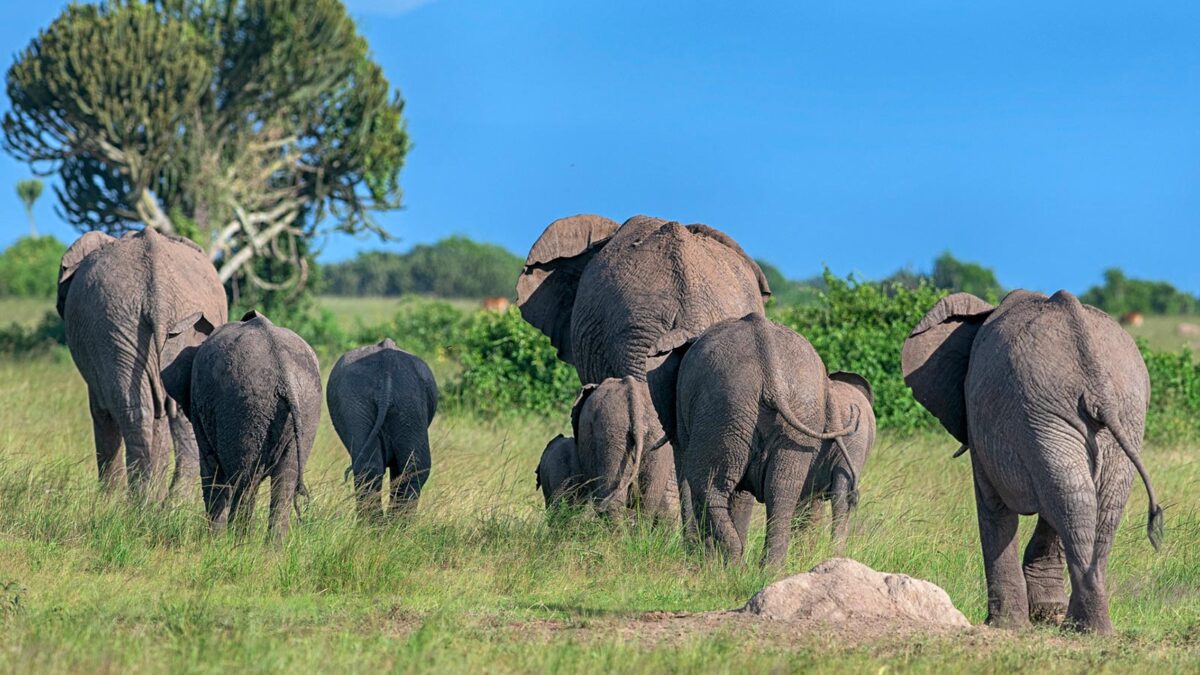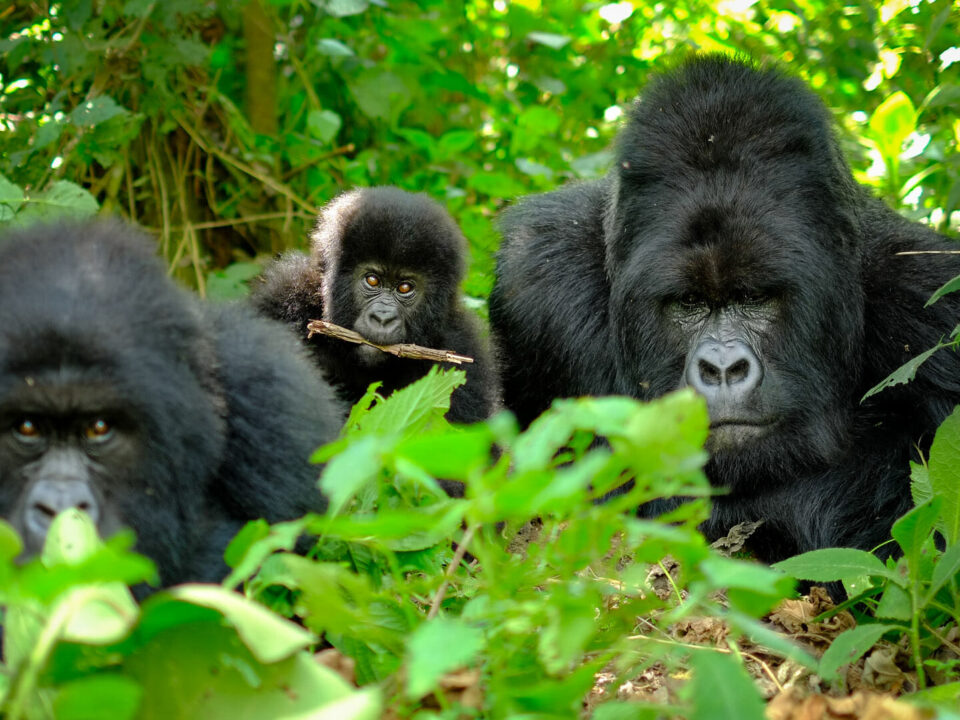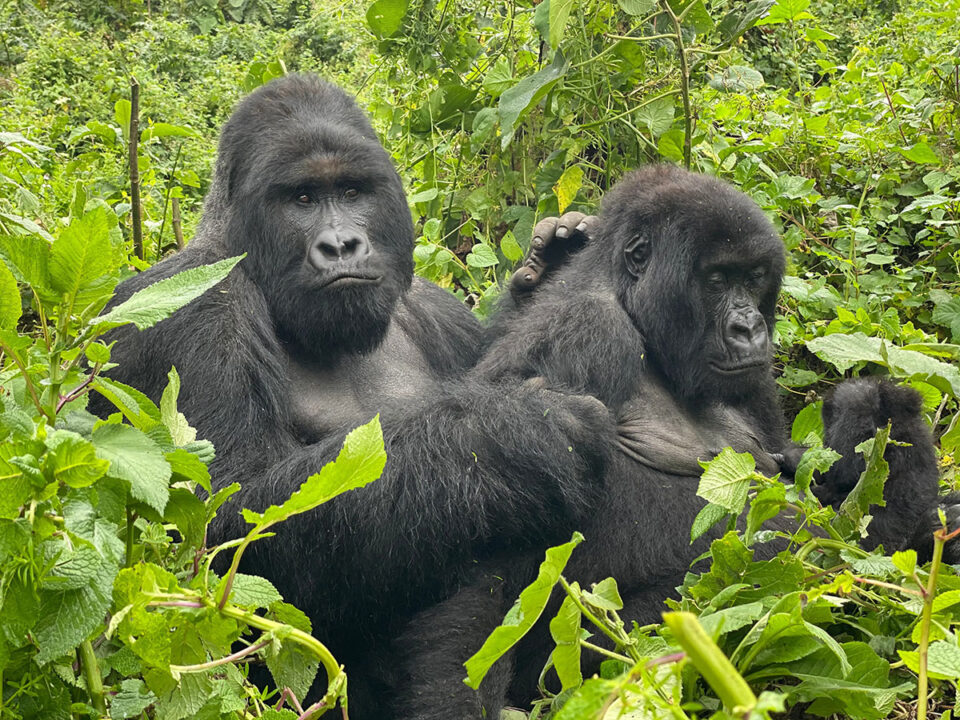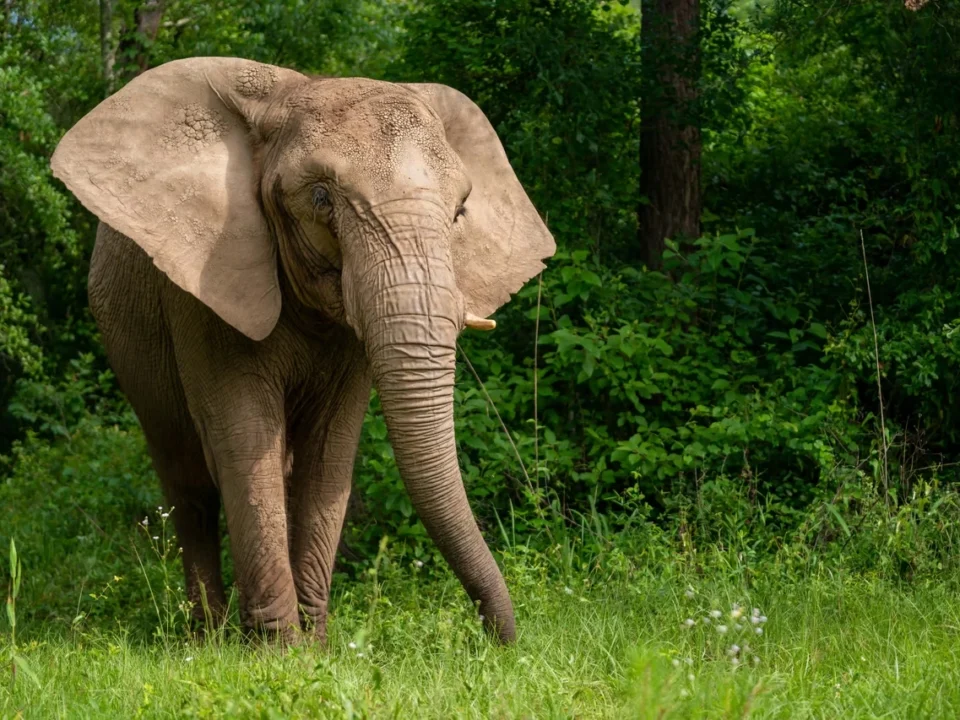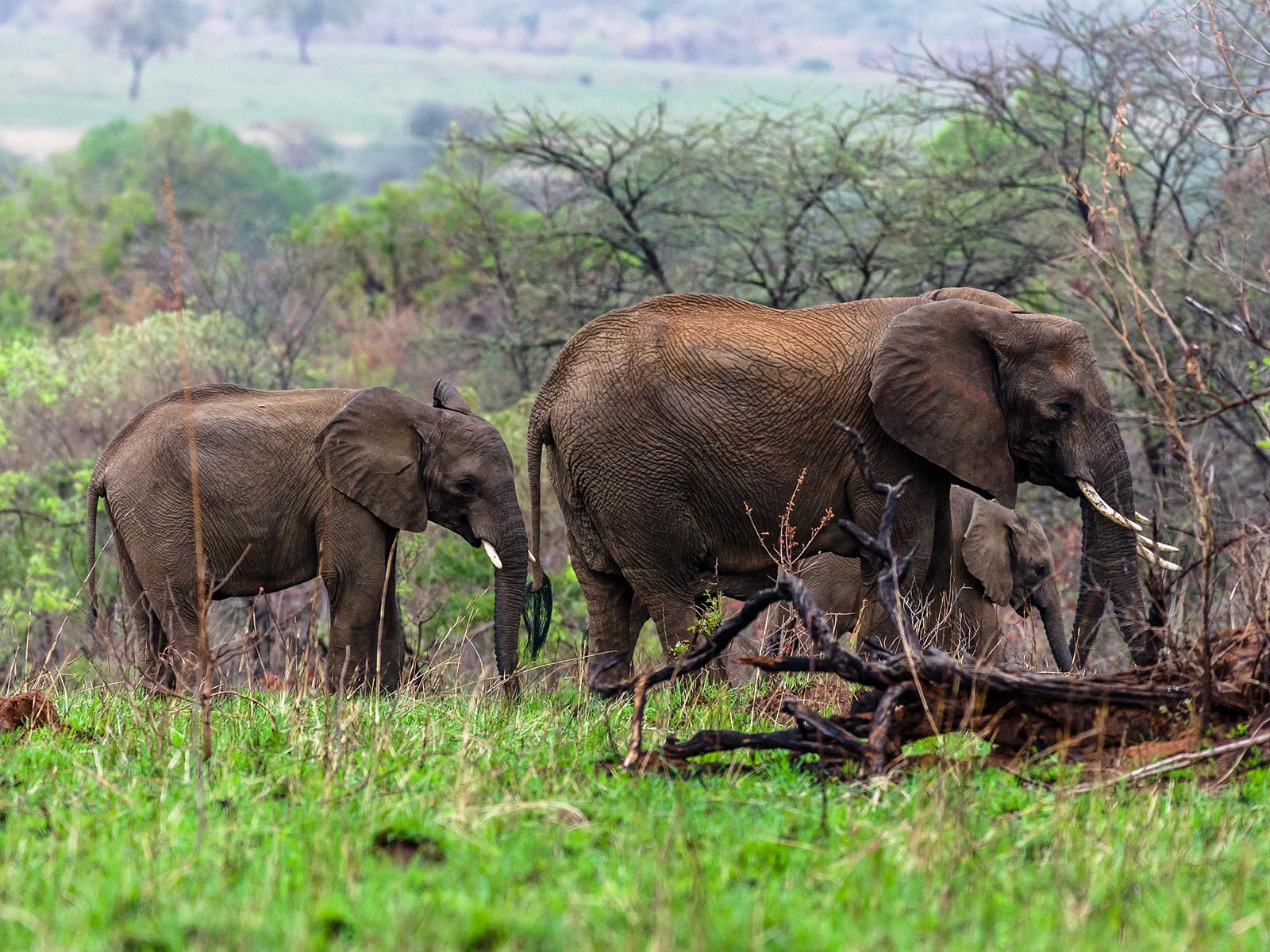
Uganda Tourism Travel Guide
September 7, 2023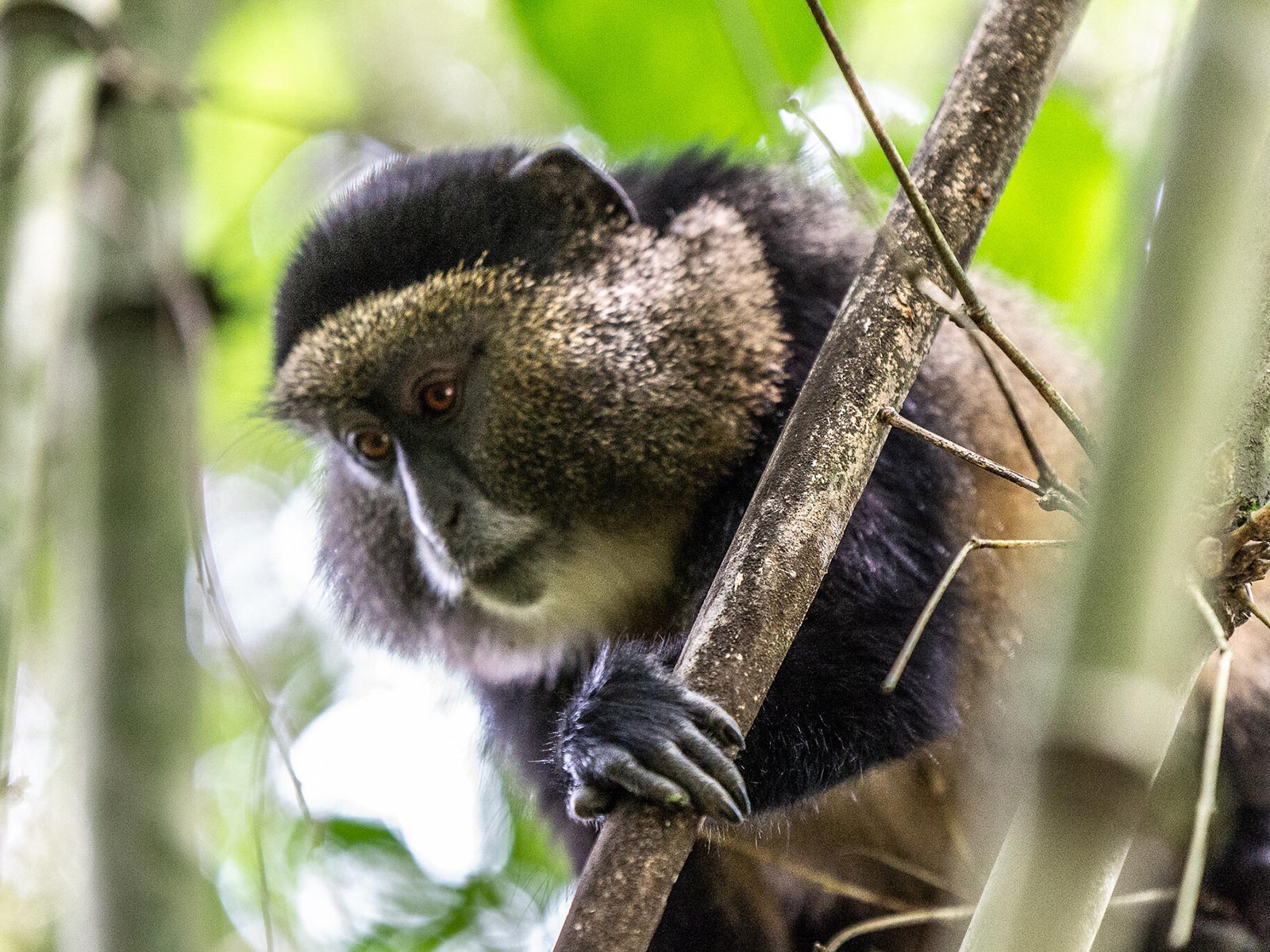
Best Places for Golden Monkey Tracking in Africa
September 7, 2023Best Places to Witness Elephants in Uganda
When it comes to experiencing the majestic presence of elephants in Uganda, there are a few key regions that stand out. With approximately 5,000 elephants gracing the Ugandan landscapes, these gentle giants find their homes in various national parks and protected areas, creating a harmonious coexistence with the vibrant wildlife that thrives in these regions.
The Elephants of Kidepo, Murchison-Semliki, and Greater Virunga Landscape:
The heart of elephant sightings in Uganda lies in the sprawling landscapes of Kidepo Valley National Park, Murchison-Semliki, and the Greater Virunga Landscape. This region encompasses Queen Elizabeth National Park, Bwindi Impenetrable National Park and Mgahinga National Parks. Here, amidst the breathtaking natural beauty, you’ll find these magnificent creatures roaming freely.
Queen Elizabeth National Park’s Remarkable Elephant Population:
Queen Elizabeth National Park, in particular, is a sanctuary for elephants, with a population totaling 2,500. This number marks a significant increase, especially considering the heavy poaching that plagued the park during the 1980s. Today, elephants in Queen Elizabeth Park have miles of unbroken savanna to explore, providing them with the space they need to thrive.
Balancing Human and Elephant Coexistence:
Outside the protected preserves, there is an ongoing challenge of human-elephant coexistence. Villagers, dependent on their fields for sustenance, sometimes resort to lethal measures when elephants trample and consume their crops. However, such conflicts have decreased thanks to the construction of protective trenches that shield fields from wild trespassers.
The Struggles of Elephant Reproduction:
Elephants, though resilient, face challenges in their reproduction rates. They endure one of the longest pregnancies of any mammal, lasting a staggering 22 months. Additionally, cows typically give birth to just one calf every two to four years. These reproduction rates are insufficient to support the global elephant population, leading to their classification as “vulnerable” by the IUCN.
Conservation Efforts and the Elephant’s Fight for Survival:
The story of elephants in Uganda is one of resilience and recovery. In the 1970s and early 1980s, the African elephant population suffered immensely due to rampant commercial poaching for meat and ivory. During this dark period, the population plummeted from an estimated 30,000 individuals in the 1960s to a mere 2,000 individuals in the 1980s.
The Vital Role of Elephants in African Ecosystems:
Elephants play a vital role as a keystone species in habitat modification. They help create balanced conditions for other species within their ecosystem. Elephants are often referred to as “gardeners” because they open up forest habitats, create firebreaks and grasslands, and provide water pools for other wildlife. Moreover, their presence aids in the dispersal of seeds, crucial for maintaining tree diversity in the wild.
Challenges to Elephant Habitat and Migration:
Historically, elephants roamed freely across Uganda through migration corridors. However, the surge in human population and the demand for arable land have drastically reduced suitable elephant habitats. This trend has led to the fragmentation of elephant habitats, disrupting their natural migratory patterns and dispersal behaviors. Nowadays, elephant distribution is primarily confined to protected areas, with only a few individuals inhabiting patchy areas outside these regions. The absence of effective corridors further restricts elephant migrations and dispersal behavior.
Current Elephant Populations in Uganda:
The largest populations of elephants in Uganda are concentrated in key protected areas:
- Queen Elizabeth National Park: 2,913 elephants
- Murchison Falls National Park: 1,330 elephants
- Kidepo Valley National Park: 407 elephants
- Kibale National Park: 487 elephants
Smaller numbers of elephants can also be found in Bwindi Impenetrable National Park, Rwenzori Mountains National Park, Toro Semliki Wildlife Reserve, Katonga Wildlife Reserve, Budongo Forest Reserve (outside Murchison Falls Protected Area), Karenga Community Wildlife Area, Otze/Dufile, Aswa Lolim, and East Madi Wildlife Reserve. Additionally, elephants have been sighted in Sango Bay, hinting at their migration patterns across the international border of Uganda and Tanzania in search of water and forage.
The Remarkable Recovery of Uganda’s Elephant Population:
Since the late 1980s, Uganda has witnessed a gradual increase in its elephant population in key elephant protected areas, including Queen Elizabeth National Park, Murchison Falls National Park, and Kidepo Valley National Park. The elephant population in wildlife protected areas is currently estimated at 5,564, with the possibility of it being higher if comprehensive elephant surveys in remaining forested areas outside national parks and wildlife reserves are conducted. This resurgence in elephant numbers from a mere 2,000 in the 1980s to 5,564 is primarily attributed to successful conservation efforts led by the Uganda Wildlife Authority, strengthened legislation and conservation policies, and the country’s improved stability and security.
Uganda’s elephants, once on the brink of devastation, now serve as a testament to the power of conservation and the unwavering commitment to preserving these incredible creatures and the ecosystems they call home. Witnessing these majestic giants in the wild is not only a privilege but also a testament to Uganda’s dedication to protecting its natural heritage.

